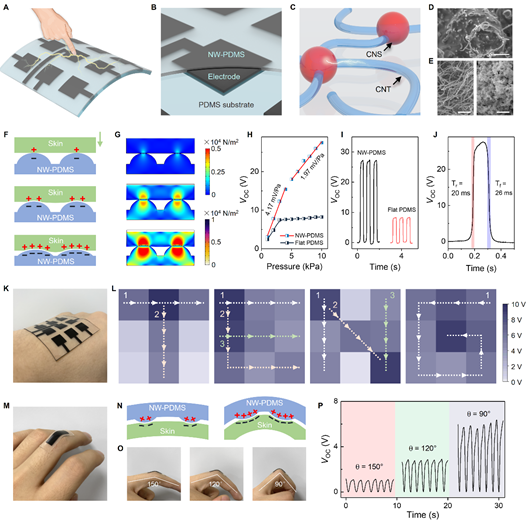Nano-wrinkled polymeric membranes have received tremendous attention for their broad applications in tunable optics, biomedicine, surface wettability, and flexible electronics. However, achieving a low-cost and scalable synthesis routine remains highly desirable. The recent work of Prof. Weiqing Yang reported a simple, bottom-up, polymer engineering strategy by introducing water molecules into the polymerization process. Water evaporation induces intermolecular forces that build a crosslinking reaction gradient from the material surface to its interior, which buckles the surface-forming wrinkles. The shape, geometry, size, orientation, and arrangement of the wrinkles on the polymer surface can be designed accordingly. Moreover, the as-fabricated nano-wrinkled, polymeric membranes display outstanding performance in energy and sensing applications, boosting output current and sensing sensitivity by 611% and 164%, respectively, compared to their flat counterparts. This work may contribute to a low-cost, scalable, and environmentally friendly strategy to engineer polymer surfaces with controllable wrinkles, showing great potential for the development of various soft-matter technologies.
This work was published in Cell sister journal Cell Reports Physical Science and selected as the Cover Paper. Professor Weiqing Yang and Jun Chen is the corresponding author and PhD. Student Binbin Zhang, Fengjun Chun, Guorui Chen are the first author of the paper. The school of Materials Science and Engineering, Southwest Jiaotong University is the first unit of this paper. This work has been supported by the National Natural Science Foundation of China, Sichuan Province Foundation, Southwest Jiaotong University and the School of Materials science.

Figure 1. Synthesizing of the low-cost, large-scale wrinkled-PDMS membrane.

Figure 2. Formation mechanism and characterization of the wrinkled PDMS.

Figure 3. Nano-wrinkled PDMS membrane for energy applications.

Figure 4. Nano-wrinkled PDMS membrane for sensing applications.
ARTICLE INFORMATION
TITLE:
Water-evaporation-induced intermolecular force for nano-wrinkled polymeric membrane
LINK:
https://www.cell.com/cell-reports-physical-science/fulltext/S2666-3864(21)00136-3
DOI:
https://doi.org/10.1016/j.xcrp.2021.100441
